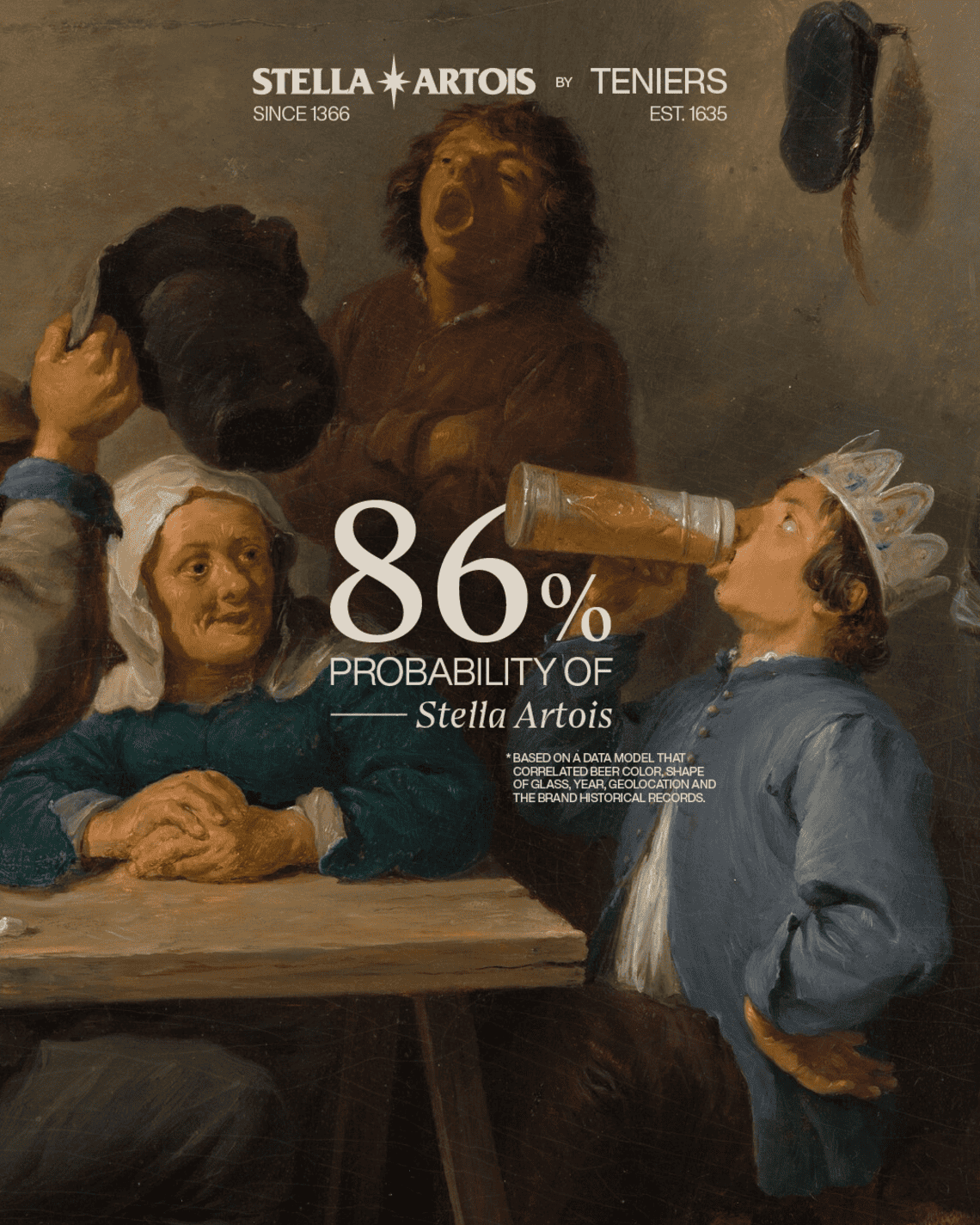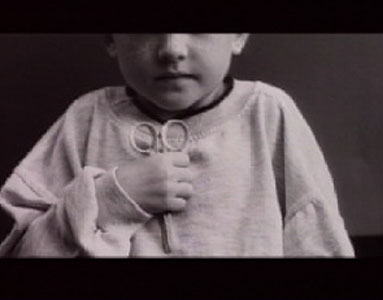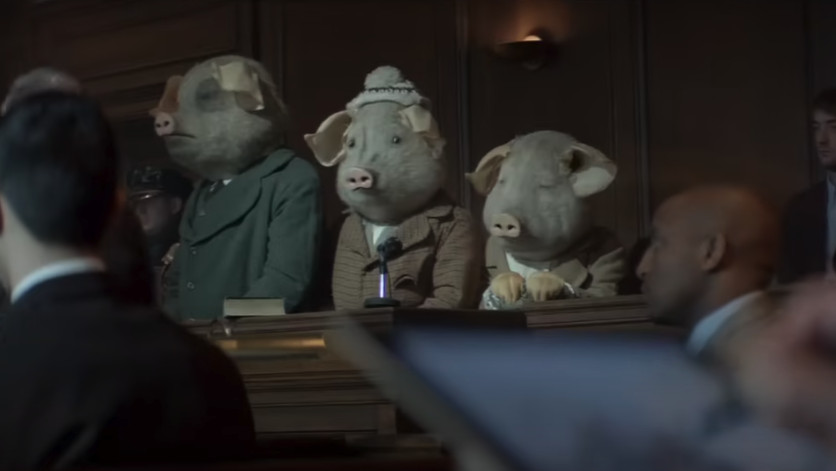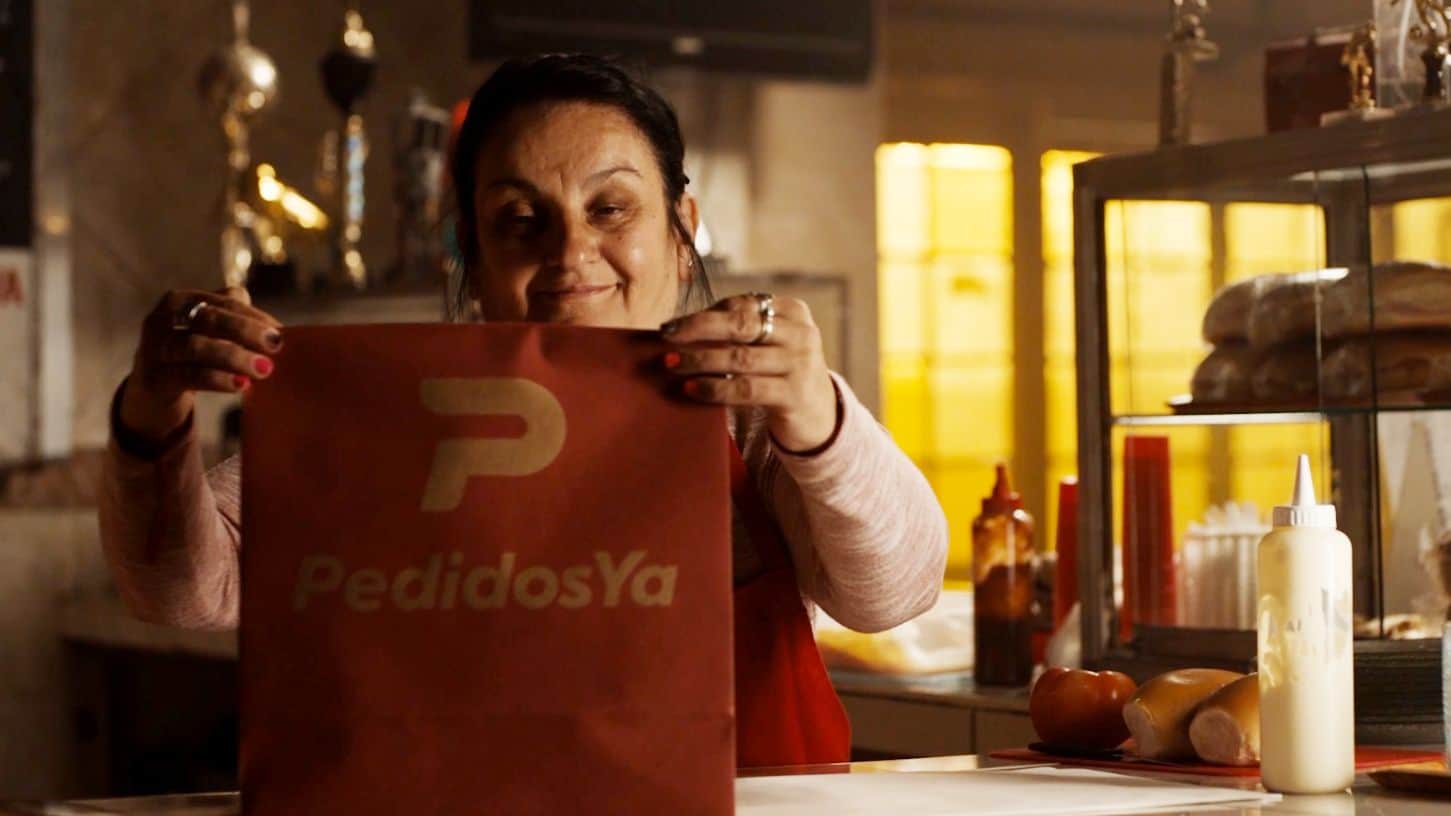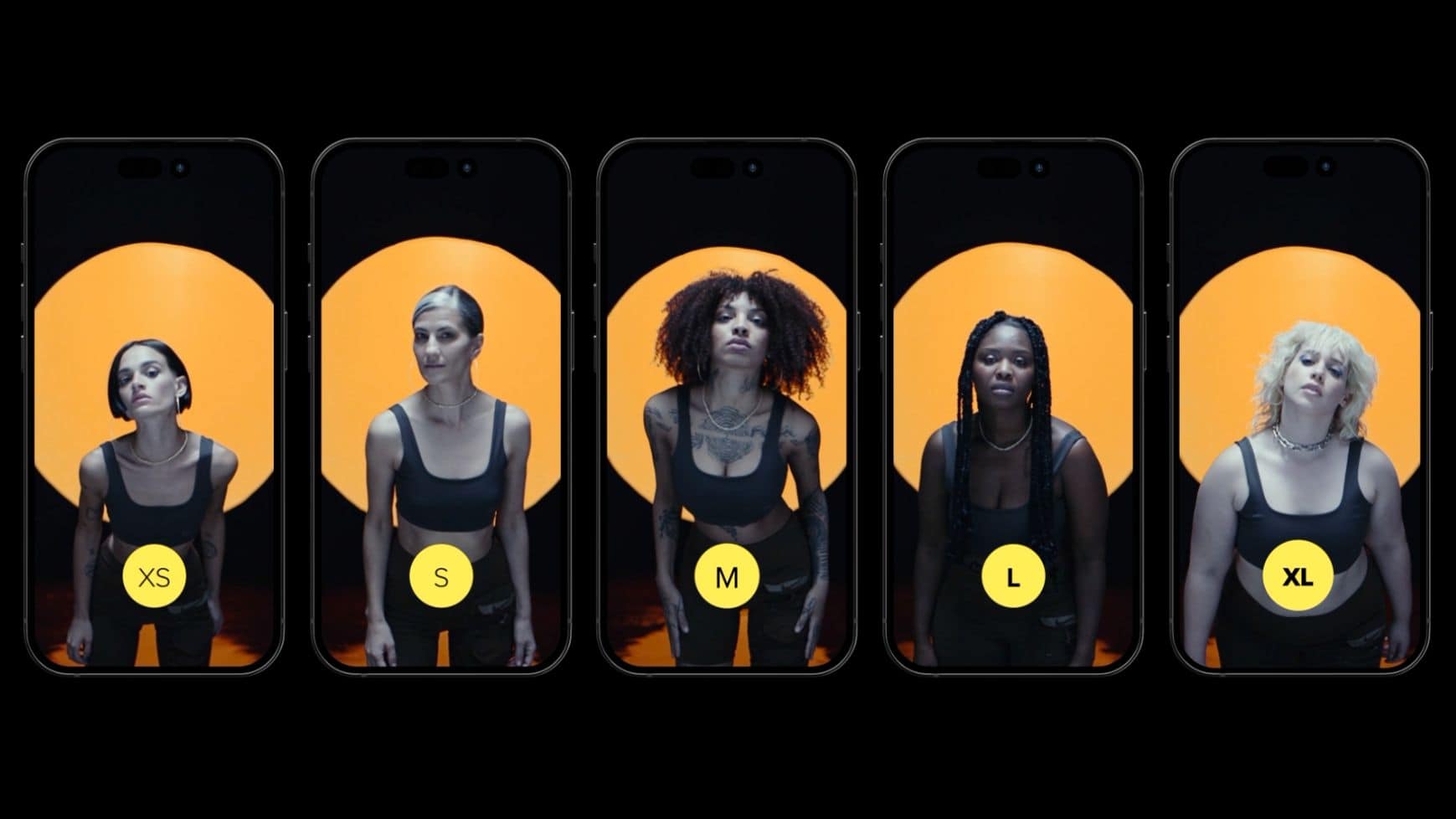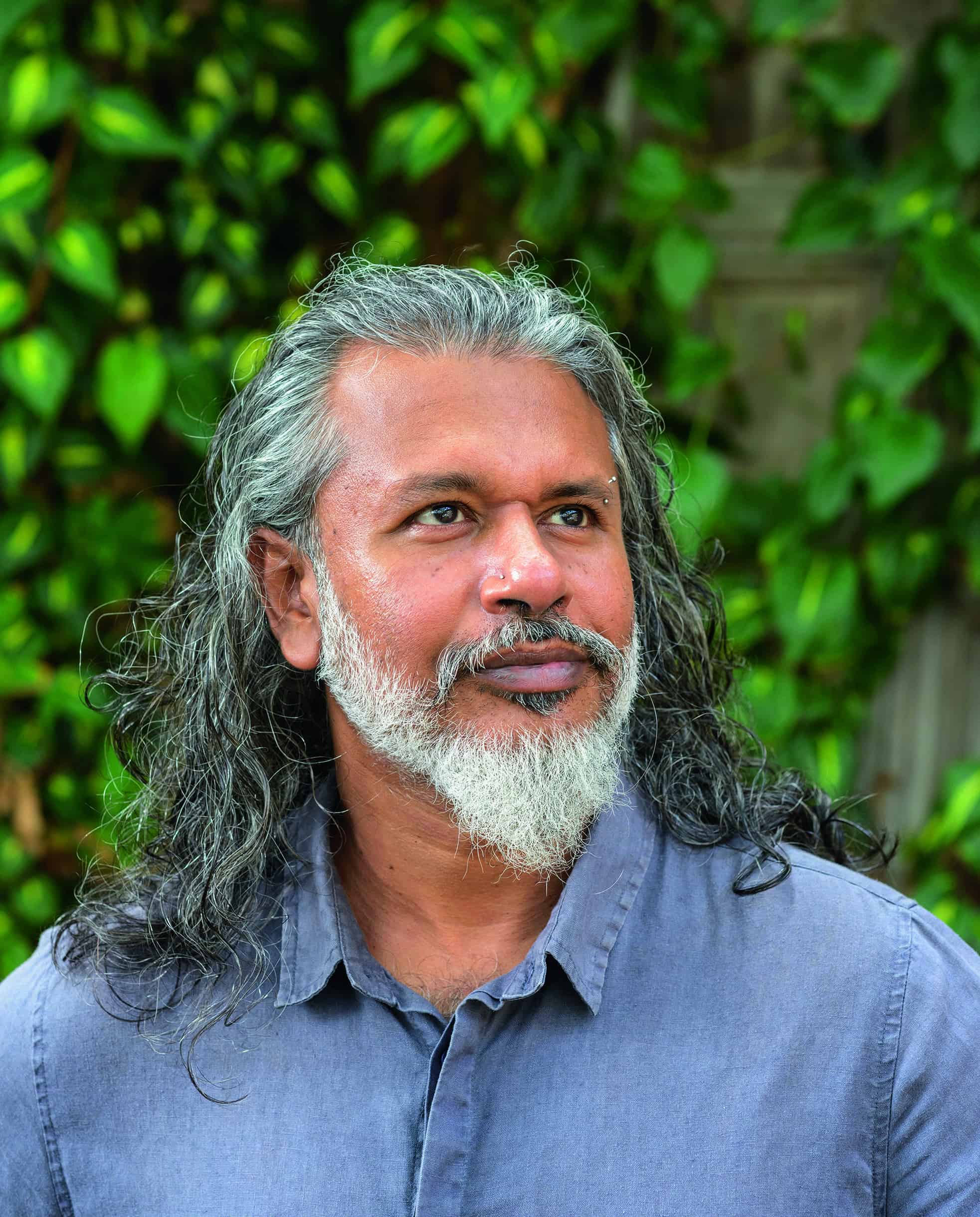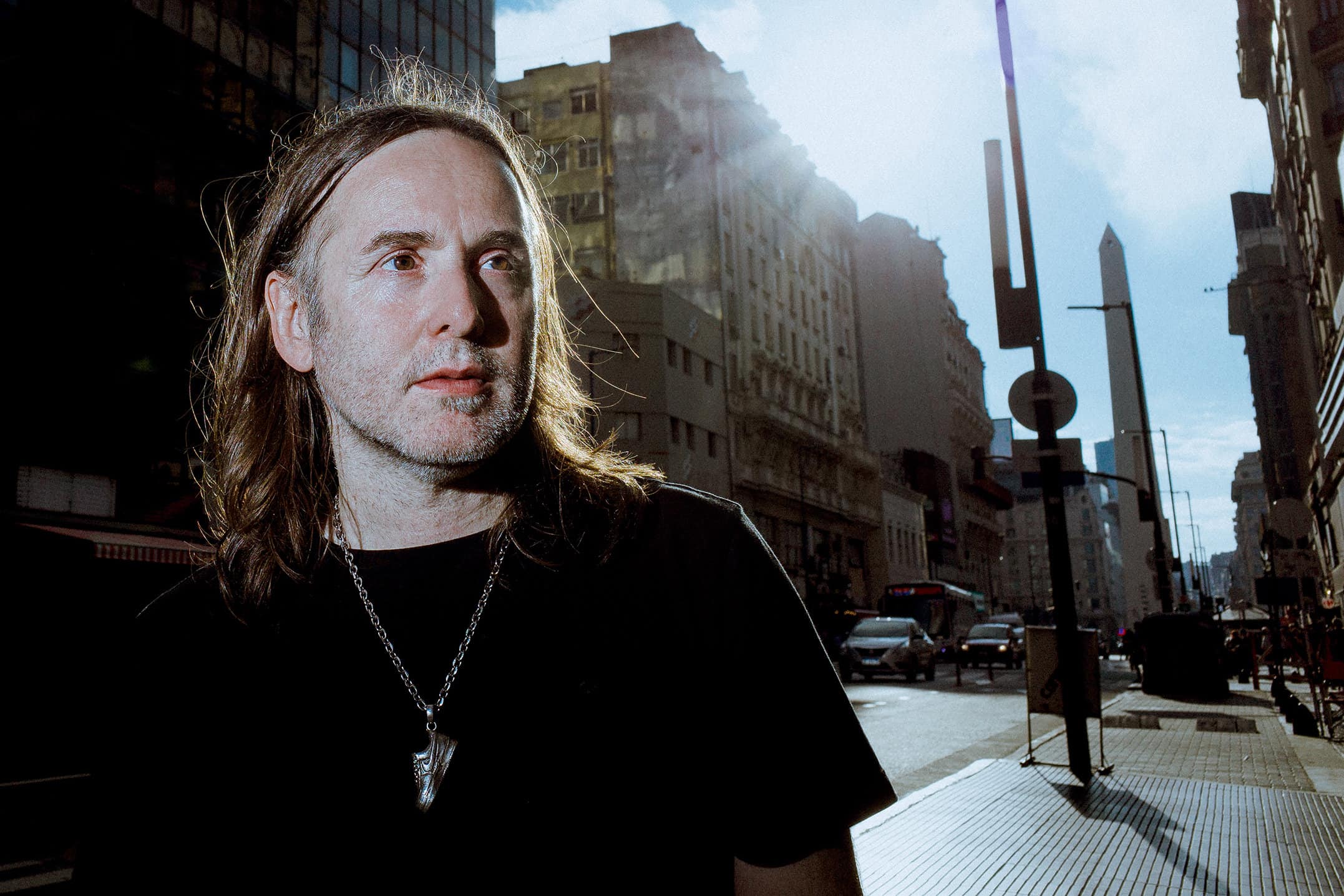
Joaquin Cubria
Interview
Latin network GUT blew away all other top contenders at the last Cannes Lions by taking best agency, best independent agency and best independent network of the year. Then the founders sold a controlling stake to a major client … that’s quite a 12 months. We talk with Joaquin Cubria (‘Joaco’ to his friends): he is a CCO (of Buenos Aires office) and a partner within the overall business.
L[A] Hi, Joaquin. Thank you for making the time. Do you know Lürzer’s Archive?
JC Yes. Thank you for inviting me. I’ve been a subscriber for … well, I’m 48, so I’m from the era where we taught ourselves advertising, especially in South America, by reading Lürzer’s Archive and a few other publications. We taught ourselves using magazines and annuals from award shows. So I’m very familiar with it.
L[A] So how did you start out?
JC When I was in fifth grade at school I had a friend and his father was an art director at Leo Burnett, which was probably one of the only big ad agencies then in Buenos Aires. I remember going to my friend’s house and seeing this oldschool art director. He would draw things and would storyboard films. Seeing that, I thought, ‘This is a cool job to do.’
So I always wanted to do that, and I was close friends with this guy. He was also the first person I knew to have a Macintosh; I was fascinated by what you could do with it, the games you could play on it. So I was driven to it. I don’t remember wanting to do anything else but advertising.
When I finished high school I started working at Grey, in the production department for two years. I knew someone and knew that I would be working for free, not getting paid, just an internship. So I did that for two years and then I was able to switch to creative and start all over again, trying to build a portfolio and a reputation. I worked at a few small agencies and then I joined BBDO when it started in Argentina.
When BBDO started in Argentina it was probably one of the worst times … Well, now it’s a very hard time, but this was perhaps the worst moment, economically, for Argentina before this one, back in 2001. We were almost close to bankruptcy as a country and that’s when we started BBDO. There was also 9/11, so these were not inspiring times to start a project. But I was part of that team of six people at the start, and when I left six years later, we were around 60 people or so and well-known with good work.
Then I left for Ponce. It was an agency in Argentina that worked a lot on Unilever global projects like Lux and Axe – all those Axe ads from the 90s and 2000s. I worked there for four or five years but left in the middle to go to Ogilvy for six months, then I came back as an ECD. So my first executive creative director experience was at Ponce Buenos Aires. I did that for two years and then left to help start David. I was David’s first hire even before it was an agency. Buenos Aires was the first David office and then it opened up to São Paolo and then Miami a few years later. I was at David all the way through from 2012 to when we started GUT in 2019.
L[A] What led to the need to start another agency?
JC Well, GUT is largely the same group of people. The founding team of David – which, of course, was Gaston Bigio and Anselmo Ramos as founders, plus me, Ignacio Ferrioli, Ricky Casal, Fernando Ribeiro was head of planning, and others. This group had started David and I think we got to a point where there were things that we couldn’t change inside a holding company [David is owned by Ogilvy] and rules that we had to play by, which didn’t always seem fair to us, like if the business is doing well and we want to retain talent, yet we cannot pay bonuses at the level we want to because that doesn’t fit in with the guidelines of the holding company. We were also being affected by such things as being charged for using services that we weren’t actually using, and stuff like that. We wanted a level of independence and felt that we couldn’t achieve that there.
Also, I think a breaking point was when Gaston and Anselmo tried to make all of us who are now partners at GUT, partners at David and the holding company said something like, ‘No. That’s not happening.’
L[A] What is this chemistry that has led a group of you to set up and work together across multiple agencies now? What keeps you together?
JC There’s an element to what I call GUT success that can sound weird when you say it yourself. But it’s undeniable that in five years we’ve created a network that is very successful, at least in terms of what we do.
A very important element to that success is that we know each other so well. Even though we operate as a network and have offices very far apart, all of us operate in a very similar way, in the way in which we approach briefs, in which we build relationships with clients.
So when you’re in need, as a brand, of making a jump from one office to another, or even of bringing offices together into an effort for a global or regional campaign, or something like that, there’s no friction. Our inter-office work is very frictionless.
My earlier experience, even in these agencies’ networks within a holding company that we created ourselves, was that when we had a project that we were sharing either with Brazil, with Miami, or whoever it was, there could be some friction: ‘Is this your business? Is this my business? Who’s going to make the most out of it? Who’s going to …?’
That doesn’t happen within GUT. We know each other so well. We’re friends, it’s like, we’re collaborating. The best part of this is that you’re not wasting energy and time making sure that you’re not being stabbed in the back.
Everything goes into the work. We don’t waste much time working out how to approach things. It’s not that we have a style but I think there’s a transparent and intuitive way of doing things that applies to most of us. We’re all ad nerds, we like the same stuff, and we all grew up admiring the same advertising as well.
L[A] There’s definitely not a style, there’s just a lot of good work. But is there some commonality there? As you say, you definitely appreciate the same things. There are maybe some influences that you could perhaps point to that are common. Is there some link there?
JC It’s undeniable that, as we grew, we brought in talents and became more diverse in every possible way. But we’re all connected culturally … Gaston is Argentinian, Anselmo is Brazilian and he’s been living more time abroad than in Brazil in his 50-something years, and yet there’s still Latin DNA in it.
When we started out, we admired the best of British advertising and the best of American … we also got European, just the best of it, like the best of French ads, and the best of Dutch, everything that was happening there.
We learned that through Lürzer’s or through the D&AD Annual, or through The One Show. We all, in some way like things set in a proper way, and we still care a lot about how we write things, which is something that I think general advertising these days doesn’t do so much.
We can work on a line for days. We’re obsessed with saying as little as we can, but saying it in the right way. Then we might try to find a way around certain, I would say, bureaucratic procedures or ways of working because, in Latin America, you usually need to find your way around things because there isn’t enough budget to sustain the same processes over time, and so you need to try to get to the same level of quality, spending less money and putting less time into it.

The CEO
El Gerente became a true-life documentary movie spawned from the drama of an earlier campaign created by GUT to promote Noblex televisions. Together, they transformed brand recognition during the 2018 and 2022 FIFA Men’s World Cups.
L[A] So tell us a bit about working in Buenos Aires now. We know that there’s an economic crisis. How does that manifest itself in creative work?
JC One of the things I admire most from the people who are still based in Buenos Aires and working down here is how they manage the stress of life together with the work. This country forces people to spend a lot of thinking time on just surviving. ‘How am I going to pay rent? What am I going to do with the money I have in local currency and I need to invest it in a way that protects its value …’
I don’t think most people from abroad would survive what happens here.
L[A] Tell us a bit about your working week.
JC We don’t depend that much on local brands. We have, I would say, probably four local brands, and the rest of the work is stuff that we do globally or regionally, or in cooperation with most of the biggest accounts with our Mercado Libre and Mercado Pago brands, which is a marketplace down here – just like Amazon but in Latin America. On those we work in collaboration with Mexico and Brazil offices. So that’s like a mixed dynamic that we have on almost every regional brief. I oversee some of that stuff from here as well. Then we do global projects. We’re working for Coca-Cola right now on a really cool thing that’s going to launch next year. We’re working a lot for Europe.
We try to find a balance that is probably 60% abroad and 40% local work in our revenue – something around that. Then what happens is, for instance, like three years ago, we started connecting with clients in Mexico, and we did a good job for one client and then that client gave us another brand, and then another one.
When word got out, a few more brands came in, and then in the end, it turned into an office. But it started in Buenos Aires, and the same thing happened with Amsterdam.
We started working on European projects and then, at a certain point, you realize if you want to make the relationship sustainable you need to open an office there. We do not open offices and wait for brands to come in. We usually build those relationships starting from Buenos Aires, and we build a local team and move onwards from there.
L[A] What roughly is the head count around the offices in different places?
JC In Buenos Aires we are close to 100 people. In Brazil we’re close to 160, I think. Miami, same size as Buenos Aires, 100. Mexico is between 40 and 50, and then you have … well LA’s a smaller office. They’re like 10, 12, something like that, and Amsterdam is the same.
When we start an office either one of the partners travels there, moves there, or we assign a partner as a boosting partner. So we make sure that the hires we make understand our ways of working, that there’s someone that’s very much from our core, making sure that relationships and business runs as we would do it.
L[A] What is the common language?
JC English. I’m amazed by Brazilians. Brazilians speak great English, perfect Portuguese, and pretty decent Spanish. But it will usually go in English.
L[A] Do you and other creative leaders personally work on creative briefs?
JC We have, I would say, a very accessible team structure. We are still very involved in the creative and strategic approach to what we do. Sometimes, I work with ECDs, sometimes I work directly with teams. We’re not structured in a big bureaucratic way of doing things. What we are very careful of is that we try to be very clear about who leads each project. We’re not getting opinions from everyone and everything because that makes it impossible to move forward in the end. We have regular creative meetings with the ECDs or CCOs from each office, and we share work there and they go like, ‘Oh, but you could do this better, or try to … What if you approach it this way?’ It’s like, ‘I have this idea and I’m doing it this way.’ And you’re getting opinions but even if this comes from a founder, you don’t have to be doing what he says. It’s just an input to work and that can be useful.
When it comes from a collaborative perspective, and when you give an opinion or when you receive an opinion, you understand that that’s just about the work and how to be objective about it. That’s very useful. So we do that a lot.
L[A] So moving on to the work itself. Can we talk about a key piece of work, a key client that helped GUT develop?
JC Yes, it’s not maybe one specific piece of work I want to highlight but it’s the kind of work that we have been doing for a brand that helped that brand transform or grow exponentially. That relationship was with Mercado Libre.
It’s a founding brand to us because … well, Mercado Libre is bigger than Amazon in Latin America, so you have the scale. It’s the number one regional marketplace. It operates from Mexico down to Argentina. It was originally an Argentinian company, but it spread. It’s already turning 25, so it’s spread a lot. It’s so big and it’s been all over the place for so long. Brazilians think it’s a Brazilian brand, for instance, which isn’t really a common thing to happen. But when we started the agency five years ago, we were invited to pitch and we were just an agency of five people down in Buenos Aires.
The brand has a very startup mindset. It still works in that way. So they went something like, ‘We will have two very big agencies pitch and have this new agency with people that are very respected and let’s also hear what they can do for us.’
There was one thing in that briefing that said, ‘You can do anything but change the tagline and our positioning.’ Obviously, what we did was change their positioning and their tagline. And even though they weren’t expecting that to happen, when they saw it they recognized that that was their next move and that they had to do that.
They came to the agency and said something like, ‘Are you sure you can grow at the pace that we need you to grow in order to make this happen?’ There wasn’t a previous relationship with the client, so it was super brave on their end to trust us that way. And it worked. I can send you a few numbers on the exponential growth of Mercado Libre in the last five years. They’re one of the few Latin American brands to be included on the most recent Time100 Most Influential Companies or got into the Kantar BrandZ Most Valuable Global Brands list. Of course, that certainly doesn’t all have to do with us. But a big part is the brand narrative and how they started doing things that were culturally appreciated in the region and became a brand that’s super relevant, especially during Covid.
L[A] What happened with the brand then?
JC We had them change their logo during Covid. They made a series of concerts for musicians, one-on-one concerts of musicians and front-line workers, directed by Juan Cabral, and very intimately. They did a lot of crazy stuff.
They did a lot of relevant work for different communities. They built the idea of this democratic brand in LATAM that gives access to people and influences their lives in many ways. This happens when you literally use their app or their ecosystem, but is also cultural, like, being one of those brands that helps the region to a better way of living.
L[A] What stands out as the most “fun” work you have put out?
JC Probably Stella Artois … It’s one of those things that start very small from the observation of, ‘Oh, the beer is from 1366 … then could that beer in that painting be a Stella Artois?’ So a very small thought, but also a very sharp and interesting, curious observation from our creatives that spotted what that could become. Out of home, and print ads, and collaborating with art critics to study an old painting and tell us what are the chances that that is a Stella Artois.
That was how it started but then the Argentinian crisis got in the way. Suddenly there were budget limitations for the client and they ended up saying, ‘We’ve spent all our money and cannot launch this right now.’
So it got postponed to the next year. In the extra time we had we started questioning it, ‘How can we make this better? Can we bring some technology into it?’ We started trying to replace the role of the art critics with tech that was being fed by art critics on one end and by a lot of research on the brand history on the other one, and how we could cross those two things.

PedidosYa
GUT had PedidosYa, Latin America’s largest delivery app, use its promo power to help grassroots Argentine football clubs survive, drawing on the origin stories of great footballers.
That was a lot of fun. I love those projects where you really need to go back to the books and study. ‘Okay, let’s see. What are the things that we need to cross on the brand side? What was the distribution then, where it was produced and what year it started moving from Leuven into Brussels … What were the artist movements in Belgium that were happening at that time? How many of those paintings have beer in them?’
The most thrilling part of it is that you don’t know if it is going to lead you somewhere or not. So when you find sweet spots, where the crossing of information gives a good result, it is ‘Whoa!’ It goes from a very small observation of ‘could or could not be’ into an, ‘it is!’ and that’s amazing. So that was fun.
L[A] Yes, you could have been really disappointed, with a big waste of time, if it turned out there was little chance of the paintings featuring a Stella Artois … it was a journey into the unknown.
JC Yes. There was a fun part of it, which was that it would make it better even if you had some results where the chances [of the painting showing a Stella as the beer] were really low, but you needed some that were really high as well. But, with that risk, I think those are the kinds of projects that are more fun, where not everything depends on you and you’re not certain of the results. You need a client that’s willing to deal with failure as well, to go on that journey and understand that it might lead nowhere.
L[A] How far with that do you go before you share an idea with the client which is maybe not going to go anywhere?
JC Because it started really small, as a print-out-of-home campaign proposal at first, without interactive elements in it, we had touched base with some art critics. In Buenos Aires, there is the National Museum, which is where we ended up holding the event, and a few critics who are very specialized in European art of the period are based there.
So we tapped into one of them. He told us there was a very high possibility in some cases because there was this Belgian movement of painters that was really strong at that time. So we checked that out at the very beginning and then later when we brought the tech element into it [to calculate the likelihood of the beer being a Stella in different paintings], that was more on our end. We explored that ourselves and went back to the client. They got really excited and they were then able to invest so that we could take it to the next level.
L[A] So you took a risk initially … ?
JC Oh, we have done a lot of that. When we’re sure about the potential of an idea, we may spend money on it if it’s needed just to prove it.
L[A] Let’s talk about the talent that you work with in your teams of young people. Is it very different for those who come into a creative department today than when you were starting out? How has it changed in the sense of the creative skills or the attitude required, and also in the actual work done as a creative?
JC I tend to think that the profiles that come to the agency are pretty much like we were, and still are, in terms of the kind of work that they like or their ad nerdiness. Where they bring some freshness into our way of thinking has more to do with tech, or approaching things from a tech perspective. And that’s really valuable.
In essence, though, I think it’s still about having people who appreciate good advertising. As our work doesn’t fit into a certain style, I think we can attract the creatives that are looking at advertising against going into the entertainment industry, or somewhere creative like that because they see that what we do can involve that kind of work as well.
Last year, for example, we did a feature film for a brand, Noblex. We did this together with Paramount Plus, which streamed on the platform and was a huge success.
Noblex is a TV manufacturer here in Argentina, facing all the difficulties of competing with LG, Samsung, Sony and all the Japanese high-tech brands, but they’re sponsors of the national football team. This story starts when we worked with them at David, during the 2018 World Cup qualifiers and Argentina was in danger of not getting to the finals in Russia. They literally just qualified in the last match that they played.
So we launched a promo that said if you bought a TV during the qualifiers and Argentina didn’t make it to the World Cup, Noblex would give you your money back. They sold all the TVs. That became a cultural thing in Argentina. There were a lot of memes created about the CEO of Noblex, all of it organic.
With that happening, we created this social persona on Twitter of the CEO of Noblex, that people were bullying. He started answering people and talking about the national team, talking about football, and it became a very big thing. It was a success story because in the end Argentina qualified – but only in the last match they played – and so he didn’t have to pay back all those TVs!
Before the Qatar World Cup in 2022, the brand wanted to do something again. The story had been so successful that Paramount wanted to do a feature film about this story of the CEO, who at that point was really just a Twitter account. The idea was to turn that account into a real person and tell that story in a feature film about how he dealt with that pressure. So they invested in it and Paramount bought the story. We were involved in the creation of the script and the shooting. I have a cameo in the film at 10 seconds! That was a lot of fun. It’s called The CEO, in English.
L[A] It’s still amazing what you can do in advertising, isn’t it? And GUT has achieved a lot in a short space of time. Where do you go from here?
JC Well, 60% of the agency was recently bought by Globant, a tech company. There comes a point where it’s really hard to do everything on your own. We always said we were going to try to grow as far as we could by ourselves but then on the next level, it would not be into a holding company because we had come from there and we know what that is like.

Globant
GUT’s amusing work for Globant projected the tech leader’s outstanding qualities. The admiration was reciprocated when the international digital leader bought a majority stake in GUT
We also said that in order for our culture and our way of doing things to survive, there needs to be someone who’s helping fund our growth but is not going to tell us how we should do things. They should want to support us to do the things that we do well.
So if we were acquired by an ad company or a holding company or a comms business, whatever, we’re going to end up in the wrong place … that’s typically how all these mergers end up. We felt we needed an investor that was either an entertainment company or a company that comes from entertainment or from a tech company. We needed somebody that would give us knowledge on something that we know but could know a lot more about, and help us find situations where we can collaborate if needed, but where we still operate independently most of the time.
Globant has been our client for four years already. We have created some good stuff for them. They know us, they hear us, and it came to a point where they went like, ‘Oh, can we be the ones that give you …?’
L[A] They believed in you and saw where that could go …
JC This is the challenge ahead of us. How do we collaborate with them to keep growing? I would say this may mostly, initially, be in the APAC region as we haven’t really been there. We’ve been working there but from this side of the world which makes it tougher.
L[A] Can you share a little about Globant?
JC They’re everywhere in the world. They’re a public company in the US and pretty big. I’m thrilled with how we crossed our way of doing things with their knowledge and their tech muscle as well, because they’re developers.
They work with gaming companies like EA, they work with Disney on experiences in the theme parks. They do things like the bracelets that make your experience in the parks frictionless. All those user experience things, they work there.
So there are a lot of opportunities to work together. I think that they’re going to help us with our clients and we’re hoping to take the way we do things to some of their clients … and they have a long list.
I think our biggest challenge now is, ‘How do we make the most out of this acquisition that they’ve made?’ In the end, they are investing in us.
L[A] Yes, this is an exciting new phase for you and GUT. We wish you well!
JC Cool. I’m a big fan of Lürzer’s. It’s a pleasure to be giving back to what the magazine gave me when I started.
How do you like to relax?
I remember a campaign from Waterstones that had an amazing headline that read: you can take a book anywhere & vice-versa. Nothing clears my mind from worries like reading and listening to music.
Where do you like to travel to?
New York, Madrid, London and Rome … my favorite four places on earth, when I’m away from home.
What’s one thing our readers should know about Buenos Aires?
It’s on the road to nowhere but it’s absolutely worth the long flight. Stay at least five days.
Joaquin Cubria’s list
Inspiration
Bruce Lee’s Enter The Dragon blew my mind as a kid. A classic 16mm projection at birthday parties.
Star Wars IV, V and VI (Star Wars, The Empire Strikes Back, Return of the Jedi). I’ve probably watched them more than 20 times.
Breaking Bad + Better Call Saul. Flawless.
All That Jazz. Never get tired of it.
Three Billboards Outside Ebbing, Missouri. A modern gem.
Recent great reads
Last thing I read was from an ex-ad copywriter Jorge Abel Muñoz. His debut novel Nada Contra qué Chocar is amazing. Check it out if you read Spanish.
Then almost everything written by Martin McDonagh (but particularly the Leenane Trilogy and Pillowman).
Nick Hornby (especially How To Be Good, Funny Girl and Juliet, Naked).
Chuck Palahniuk (check out Pygmy for a great laugh).
All-time favourite ads by other people

